Abstract
Uniform synthetic beads were developed as carriers for the bacterial inoculation of plants. The beads are made of sodium alginate and skim milk and contain a large reservoir of bacterial culture which releases the bacteria at a slow and constant rate. The beads are biodegradable and produce no environmental pollution. The strength of the beads, the rate of bacterial release, and the time of their survival in the soil can be controlled by several hardening treatments. The final product, lyophilized beads, is simple to use and is applied to the seeds concomitantly with sowing. The released bacteria are available for root colonization immediately at seed germination. Dry beads containing bacteria can be stored at ambient temperature over a long period without loss of bacterial content; storage requires a limited space, and the quality control of a number of bacteria in the bead is simple. The level of plant inoculation with beads was similar to that with previously used peat inoculants, but the former method yielded more consistent results, as the frequency of inoculated plants was much higher. The former method provides a different approach for inoculation of plants with beneficial rhizosphere bacteria.
Full text
PDF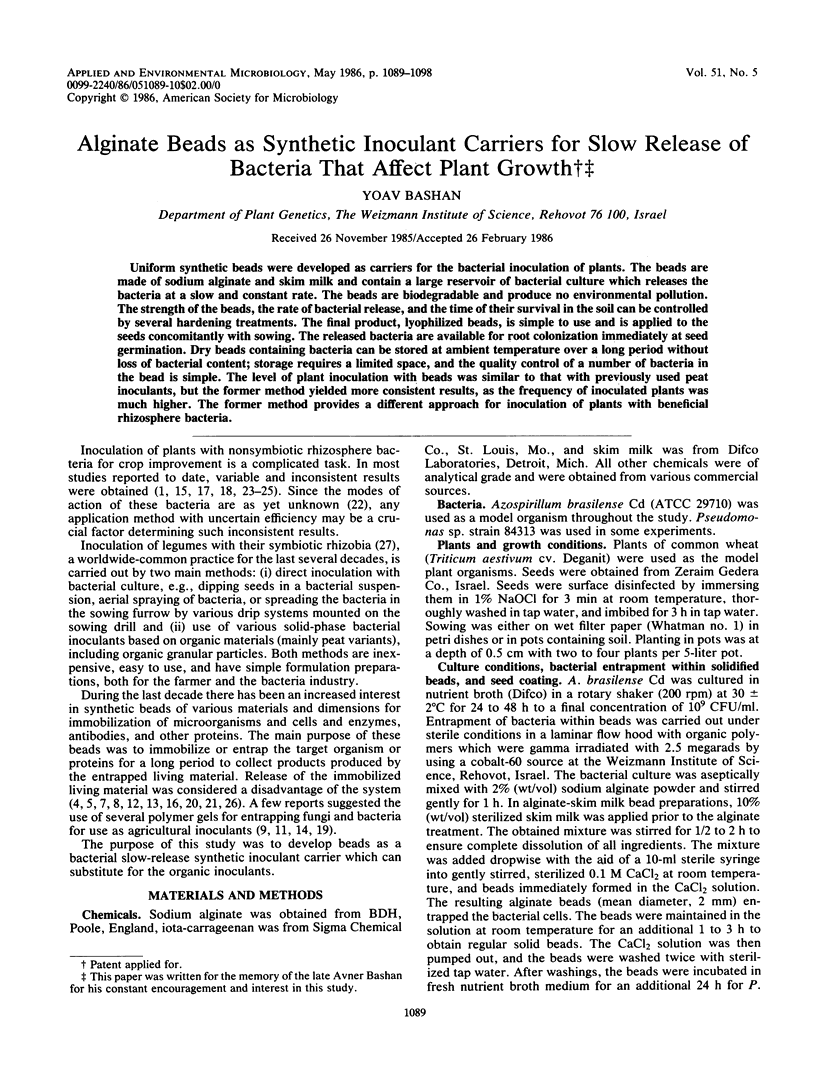
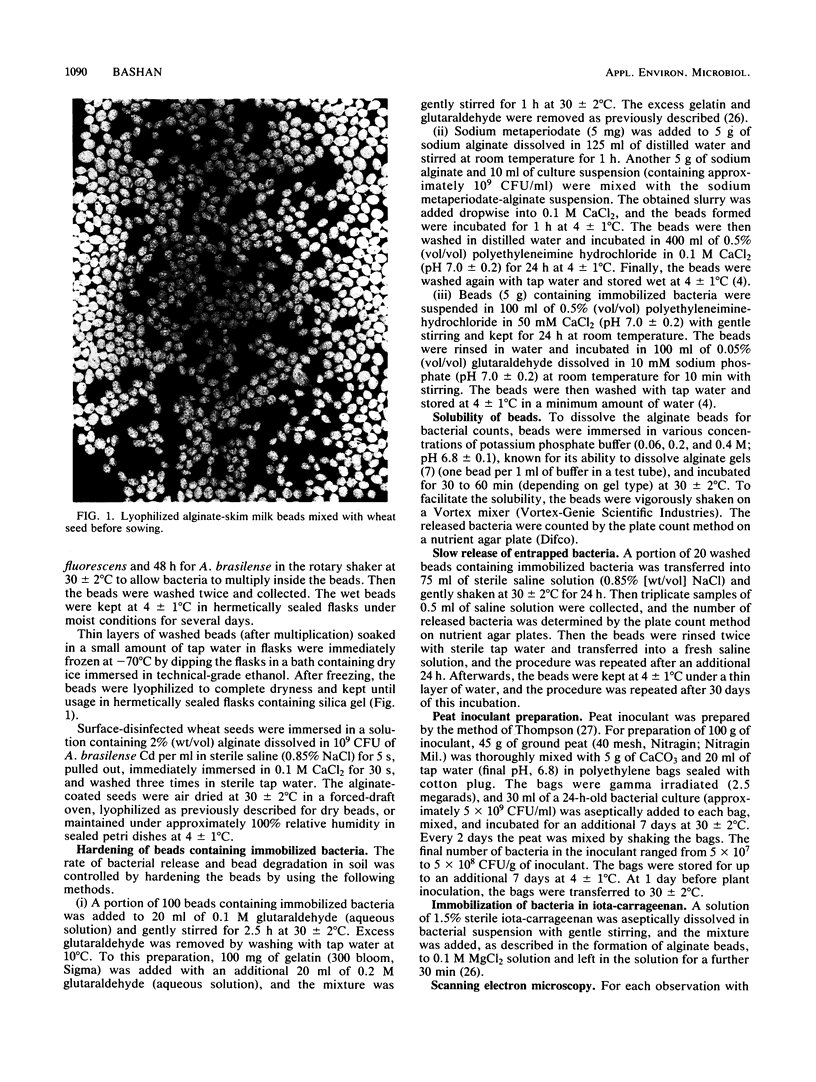
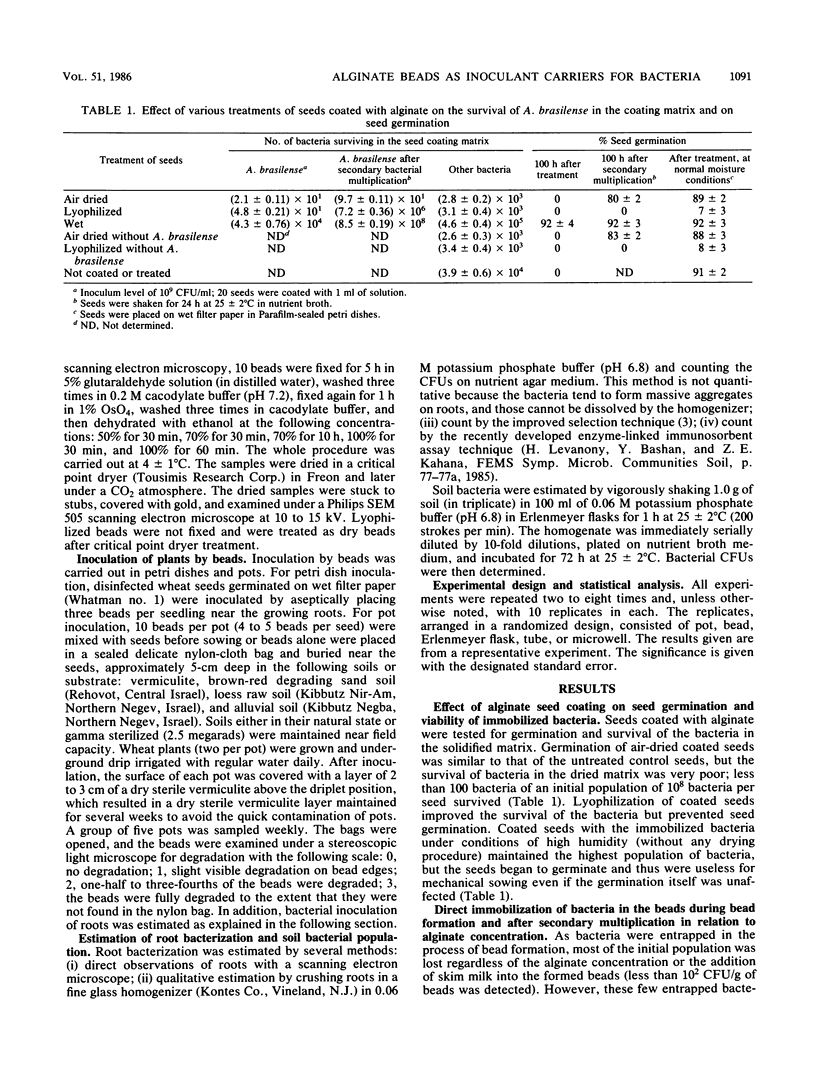



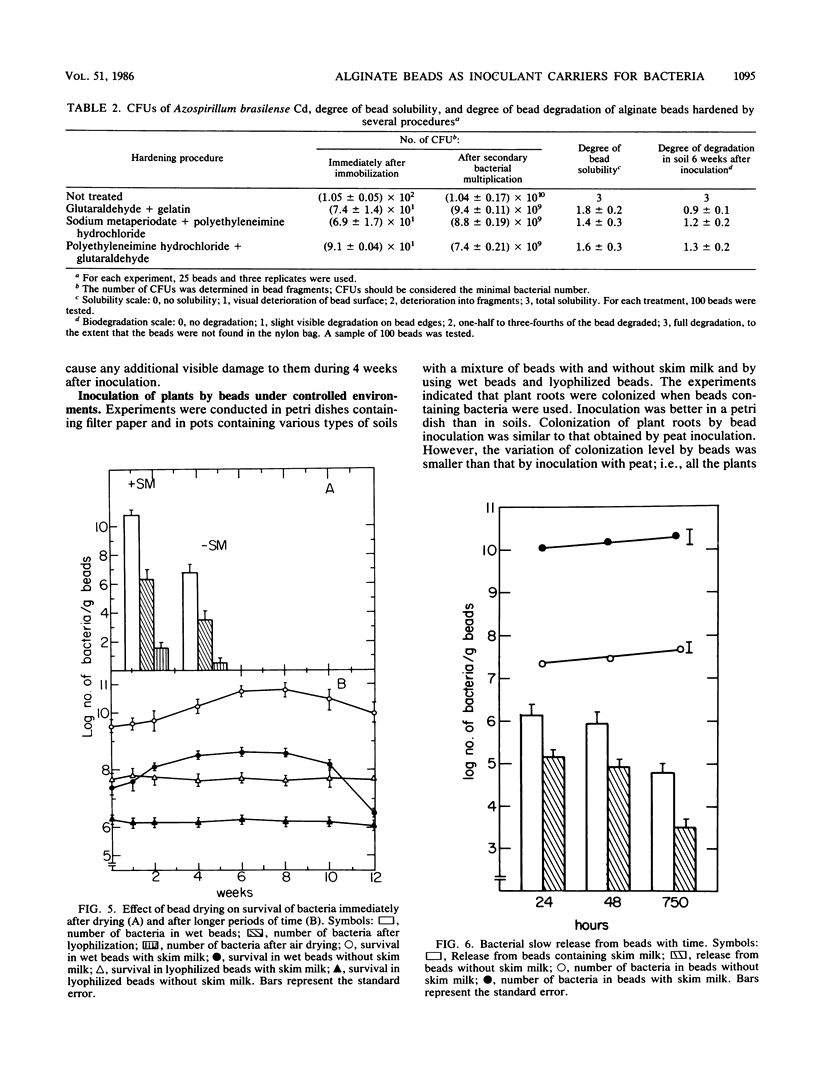
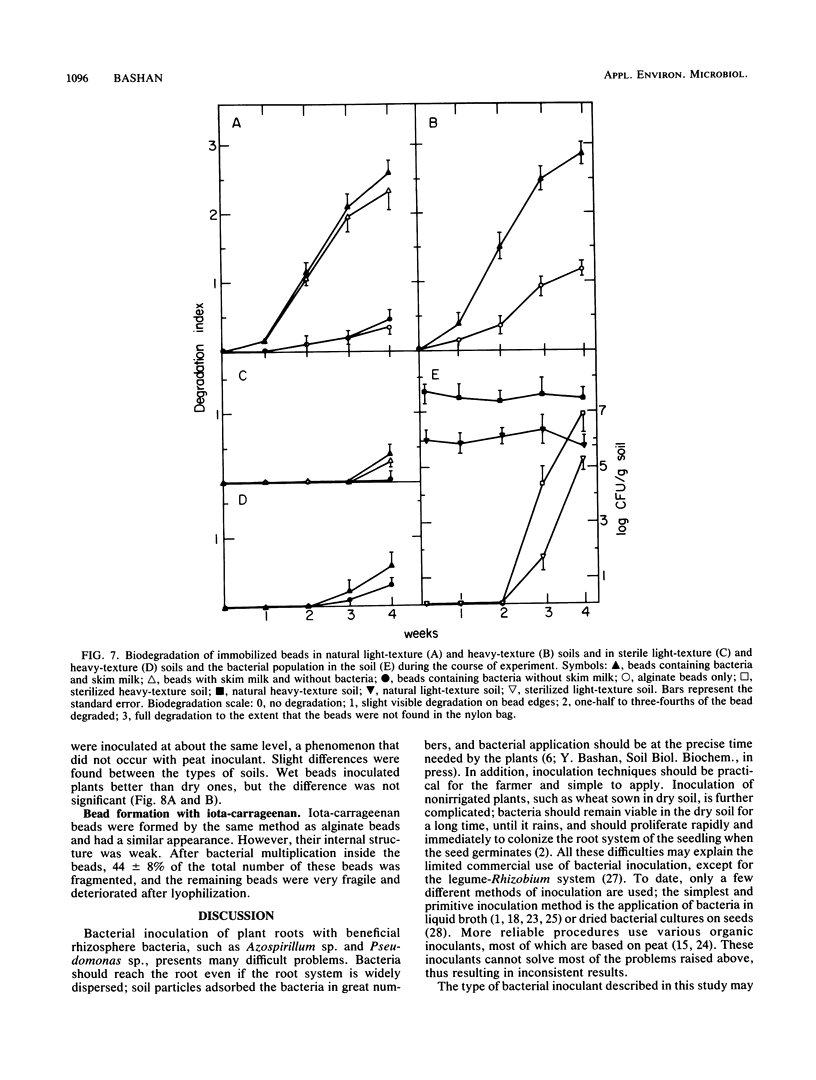

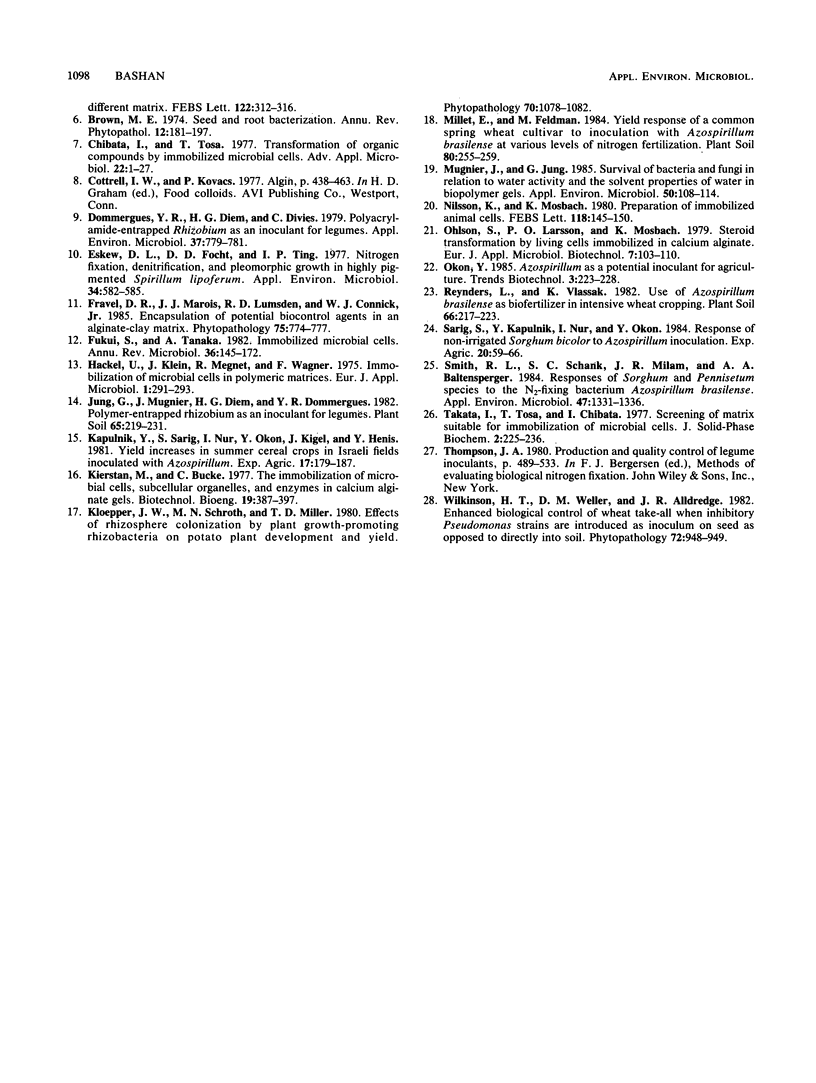
Images in this article
Selected References
These references are in PubMed. This may not be the complete list of references from this article.
- Bashan Y. Enhancement of Wheat Root Colonization and Plant Development by Azospirillum brasilense Cd. Following Temporary Depression of Rhizosphere Microflora. Appl Environ Microbiol. 1986 May;51(5):1067–1071. doi: 10.1128/aem.51.5.1067-1071.1986. [DOI] [PMC free article] [PubMed] [Google Scholar]
- Chibata I., Tosa T. Transformations of organic compounds by immobilized microbial cells. Adv Appl Microbiol. 1977;22:1–27. doi: 10.1016/s0065-2164(08)70158-8. [DOI] [PubMed] [Google Scholar]
- Dommergues Y. R., Diem H. G., Divies C. Polyacrylamide-entrapped Rhizobium as an inoculant for legumes. Appl Environ Microbiol. 1979 Apr;37(4):779–781. doi: 10.1128/aem.37.4.779-781.1979. [DOI] [PMC free article] [PubMed] [Google Scholar]
- Eskew D. L., Focht D. D., Ting I. P. Nitrogen fixation, denitrification, and pleomorphic growth in a highly pigmented Spirillum lipoferum. Appl Environ Microbiol. 1977 Nov;34(5):582–585. doi: 10.1128/aem.34.5.582-585.1977. [DOI] [PMC free article] [PubMed] [Google Scholar]
- Fukui S., Tanaka A. Immobilized microbial cells. Annu Rev Microbiol. 1982;36:145–172. doi: 10.1146/annurev.mi.36.100182.001045. [DOI] [PubMed] [Google Scholar]
- Kierstan M., Bucke C. The immobilization of microbial cells, subcellular organelles, and enzymes in calcium alginate gels. Biotechnol Bioeng. 1977 Mar;19(3):387–397. doi: 10.1002/bit.260190309. [DOI] [PubMed] [Google Scholar]
- Mugnier J., Jung G. Survival of bacteria and fungi in relation to water activity and the solvent properties of water in biopolymer gels. Appl Environ Microbiol. 1985 Jul;50(1):108–114. doi: 10.1128/aem.50.1.108-114.1985. [DOI] [PMC free article] [PubMed] [Google Scholar]
- Nilsson K., Mosbach K. Preparation of immobilized animal cells. FEBS Lett. 1980 Aug 25;118(1):145–150. doi: 10.1016/0014-5793(80)81238-5. [DOI] [PubMed] [Google Scholar]
- Smith R. L., Schank S. C., Milam J. R., Baltensperger A. A. Responses of Sorghum and Pennisetum Species to the N(2)-Fixing Bacterium Azospirillum brasilense. Appl Environ Microbiol. 1984 Jun;47(6):1331–1336. doi: 10.1128/aem.47.6.1331-1336.1984. [DOI] [PMC free article] [PubMed] [Google Scholar]





